Chest muscle strain
Table of Contents
What is the chest muscle strain?
A muscle strain in your chest can cause pointy, sudden pain. This occurs when your chest muscle is over-stretched or torn. Chest muscles assist control your breathing and stabilizing your upper body.
A strain of chest muscle is often caused by several different situations. Those with weak chest muscles often injure themselves from work, especially if the muscles aren’t warmed up first. many of us pull our chest muscles from lifting weights or moving heavy furniture.
Another common explanation for chest muscle strain is contact sports and other athletics that require forceful or repetitive motions. Tennis, golf, and rowing are prime examples. Outside of physical activities, a pulled chest muscle can easily occur from too much and hard coughing. people that suffer from bronchitis or a bad cold can injure and inflame chest muscles from incessant, deep coughs.
Although uncomfortable, a strained chest muscle is typically a minor injury that tends to heal within days or weeks.
Where is chest muscle located?
The chest anatomy includes the pectoralis major, pectoralis minor, serratus anterior, and Subclavius muscle.
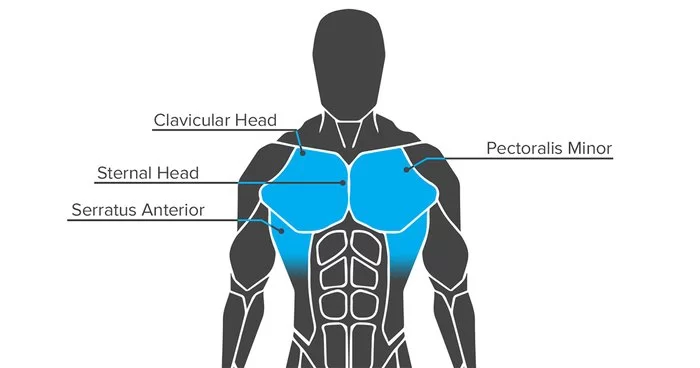
origin:
- Clavicular part: anterior surface of sternum
- Sternocostal part: the first 7 costal cartilages, the sternal end of the sixth rib
- Abdominal part: the aponeurosis of the external oblique of the anterior abdominal wall
insertion:
- Crest of the greater tubercle of the humerus
action:
- Shoulder joint: Arm flexion (clavicular head),arm extension ,Arm adduction, Arm internal rotation (sternocostal head);
- Scapulothoracic joint: Draws scapula anteroinferior
Pectoralis minor
Origin
- Anterior surface, costal cartilages of ribs 3-5
Insertion
- Medial border and an upper surface of the coracoid process of the scapula.
action
- Elevates the ribs for deep inspiration when the pectoral girdle is fixed or elevated With the scapula stabilized,
Serratus anterior
Origin
- Superior part: Ribs 1-2, Intercostal fascia
- Middle part: Ribs-3-6
- Inferior part: Ribs 7-8/9 (variably extends to rib 10 (+ external oblique muscle))
Insertion
- Superior part: Anterior surface of the superior angle of the scapula
- Middle part: Anterior surface of the medial border of the scapula
- Inferior part: Anterior surface of inferior angle and medial border of the scapula
action
- Scapulothoracic joint: Draws scapula anterolaterally, Suspends scapula on the thoracic wall, Rotates scapula (draws inferiorly angle laterally)
Subclavius
It is a small muscle, which is located directly covered by the clavicle bone, running horizontally.
Origin
- from the junction of the 1st rib & its costal cartilage.
insertion
- the inferior surface of the middle third of the clavicle bone.
action
- Anchors & depresses the clavicle bone.
Causes of chest muscle strains include
- Chest wall strain that’s caused by a pulled muscle often happens as a result of overuse.
- you’ll have lifted something heavy or injured yourself playing sports. as an example, gymnastics, rowing, tennis, and golf all involve repetitive motion.
Other activities which will cause strain are:
- Sports injuries from overstretching, muscle fatigue, or performing repetitive and forceful movement
- Contact Injuries
- Inadequate warm-up before exercise
- Work
- Poor flexibility
- Squeeze the torso above its normal range
- Reaching overhead for extended periods
- Overuse of the Chest muscles
- Chronic poor posture
- Falling
- A severe cough
Grade of chest muscle strain
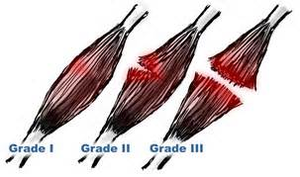
- Grade I: Mild injury causing the muscle fibers to stretch beyond their normal limit
- Grade II: Moderate injury where several muscle fibers may tear
- Grade III: Severe injury where the entire muscle ruptures
Sing and symptoms of muscle strain in the chest
- Muscle spasms
- Sharp or dull pain
- Swelling
- Pain while breathing
- Difficulty moving the affected area
- Bruising
Seek medical attention if your pain happens immediately while you’re engaged in strenuous exercise or activity.
- Dizziness
- Fainting
- Irritability
- Increasing pulse rate
- Sweating
- Difficulty breathing
- Sleepiness
- Fever
How to diagnose chest muscle strain?
- Mild strains can usually be diagnosed based on the medical history including a review of the symptoms and how the injury occurred—and a physical examination by a doctor.
- In cases of more severe strains, especially when there is weakness or loss of function, an X-ray may be taken
- Magnetic resonance imaging (MRI)
- Electrocardiogram (ECG)
Assessment
Subjective assessment
- History with associated symptoms
- Mechanism of injury inciting trauma
- Direction and extent of injury force repetitious trauma
Palpation
- Tenderness
- Swelling
Treatment of muscle strain in the chest
Medical Treatment for chest muscle strains infrequently requires surgery and still may be necessary for a complete rupture.
For immediate
- Nonsurgical, Conservative treatment maximum muscle strains do not demand surgery if the muscle is fully damaged doctors suggest surgery If there is a partial gash also the athlete can replace when they are effortless and have normal strength and movement.
- This generally occurs following anywhere from many weeks to many months of significant treatment and therapy. When the muscle is fully damaged, the athlete may advantage from surgical repair. e tone- care of a muscle strain.
- Some therapists suggest avoiding inimical pain medicines that can extend your threat of bleeding — similar to over-the-counter (OTC) medicine (naproxen sodium (Aleve) aspirin and ibuprofen (Advil, Motrin IB), — during the first 48 hours after a muscle strain. Acetaminophen (Tylenol) and others can be helpful for pain relief during this period.
- A physiotherapist can help you to increase the strength and stability of the injured joint or limb. Your doctor may suggest that you stabilize with a brace. For some muscle injuries, chest muscle sprint surgery may be called.
The R.I.C.E approach
To prevent swelling and pain as first aid by following RICE principal
- R- Rest
- I- Ice for cooling
- C-Compression tapping and splinting
- E- Elevation
RICE APPROACH

- Rest. Avoid activities that cause pain, swelling, or discomfort. don’t avoid all physical activity. Ice. though you are seeking medical facilities,
- Ice: The world right away. Use an associate degree ice pack or slush tub of ice and water for15 to 20 minutes every time occasion anytime and repeat every 2 to 3 hours. In contrast, you are awake for the primary few days once the injury.
- Compression: To assist stop swelling, compress the world with an associate degree bandage till the swelling stops. do not wrap it too tightly otherwise, you might hinder circulation. Begin wrapping at the top farthest from your heart. Loosen the wrap if the pain increases, space becomes numb or swelling is going on below the wrapped area.
- Elevation: Elevate the burned space on top of your heart’s extent, particularly at midnight, that permits gravity to assist in scale chest swelling.
Physiotherapy treatment
The aim of activity treatment is
- Relieve chest muscle pain
- Reduce muscle swelling
- Increases chest muscle strength
- Restore patient’s confidence
- Restore patients’ full functional activity
Phase one: one to two week
First-week electrotherapy
- Ultrasound
- Ultrasound has been used for tissue healing
- Increase blood circulation and mobility.
- To reduce swelling and pain
- Cryotherapy
- Inflammation and swelling can be reduced by applying cryotherapy in form of ice packs, and cold water baths to the affected area.
- Continuous application of colds several times a day for 15-30 minutes at a time is recommended.
- TENS
- Transcutaneous electrical nerve stimulation (TENS) may be able to help reduce pain and muscle spasms.
- Interferential therapy (IFT)
- There are the main clinical applications for which IFT appears to be used:
- Pain relief
- Muscle stimulation
- Increased local blood flow
After pain relief start to exercise
Isometric exercise for a few days
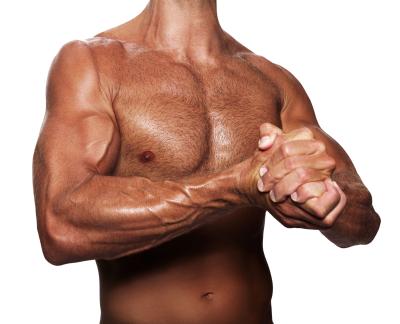
1) Isometric Chest Press
When you hear “chest press”, you most likely think of an exercise done on a machine or with free weights, but an isometric chest press requires nothing quite your own two arms to execute.
you just sit with your back straight or stand upright and grasp your hands together, holding them up ahead of your chest.
Press them against one another with as much intensity as you can while flexing your pectorals.
Hold the exercise for 10 to 15 seconds and then relax
Perform 10 to 15 rept

2)Isometric Push-Ups
Push-ups might sound old-fashioned when compared to modern exercise machines and popular workouts, but there is a reason push-ups have endured:
They do not require specialized equipment and they effectively build muscle and strength. A typical push-up isn’t considered an isometrics but it becomes one if performed in a specific way.
Start during a typical push-up position and breathe out as you slowly bend your arms, descending halfway right down to the floor.
Hold your body suspended at the halfway position for 20 to 30 seconds, Hold on your muscles taut, and maintain tension in your pectoral muscles.
Then slowly lower yourself to the ground, resting for 10 to twenty seconds, and then repeat.
Do 10 to15 repetitions

3)Isometric Fly’s
Usually, flies are through with dumbbells but if you want to execute the same exercise isometric-style all you need is an open door.
Begin the isometric fly’s by standing within the doorway with your feet about shoulder-width distance apart.
Brace your hands, palms flat, against the wall on all sides of the doorjamb, about chest high.
Lean chest first into the doorway as you exhale and press your hands to the wall.
Tense your pectoral muscles and keep them tight as you hold the exercise for 30 seconds, then slowly relax for five to ten seconds.
Do 10 to 15 repetitions
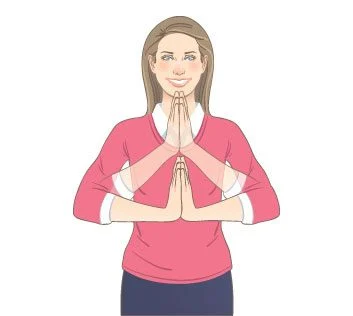
4)Prayer Press
The isometric chest press is often done sitting or standing. Begin by pressing your hands ahead of your chest in a prayer position.
Keep your elbows at 90-degree angles. Apply as much pressure between your palms as you can create
Hold for 5 to 10 seconds, then relax for 5 to 10 seconds.
Do 10 to 15 repetition
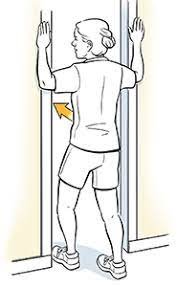
5)Doorway Pull-Apart
Standing during a doorway, place your hands at about chest level against either side of the door frame.
Exert outward pressure as if you’re trying to push the edges of the door frame farther apart.
Use the pressure to tug your chest slightly forward into the doorway.
Hold for 15 seconds then relax
Rest for 30 seconds and repeat.
do 10 to 15 repetitions.

6)Wall Push-Up
Place your hands against a wall at shoulder height together with your body leaning inward at a slight hang.
Your feet should be securely planted into the ground.
Gripping shoe soles could also be necessary to avoid sliding.
Apply pressure through your arms, chest, and hands as if you’re trying to push the wall away, pulling your shoulder blades down as you press.
To make the exercise more challenging, lower your hands to close waist level.
do10 to 12 repetition
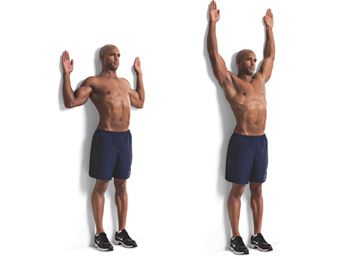
8)Arms slide on the wall
stand along with your back against a wall and your elbows and wrists against the wall.
Slowly slide your arms upward as high as you’ll while remaining your elbows and wrists against the wall.
Do 10 to 15 repetition
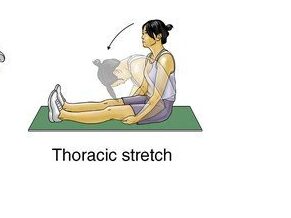
9)Thoracic stretch
Sit on the mat and rest with your legs out straight in front of you.
Hold your mid-thighs along with your hands.
Curl your head and neck near your belly button.
Hold for 15 seconds.
Repeat 3 times
Phase three: After four week
Strengthening exercise

1)Camel pose
First Kneel on the floor with your knee joint hip-width apart & your hands at your waist.
Your toes are tucked or the tops of your feet which are flat against the floor.
Then Slowly reach back toward your left heel with your left hand & follow with your right hand and heel.
If you feel this exercise is difficult then place your hands on your lower back.
Must be Keep your chest lifted, shoulders back & core muscle engaged.
Then slowly push your hip joint forward, making sure to keep your chin down.
When you feel OK then slowly release your head backward.
Hold this pose for at least five breaths then slowly reverse the move.
Do 10 to 15 repetition

2)Resistance band pullover
You are, sitting on your back with your head toward the anchor point.
The band is placed about 1–2 feet higher than your head.
Then Grasp the band overhead so that there is slight tension on the band.
Must be Keep your thumbs pointing to the sky & your palms facing away from each other.
Keep your core muscle tight & elbow joint straight.
Pull the band toward your hip joint.
Then Slowly return to the starting position with control.
Do 10 to 15 repetition
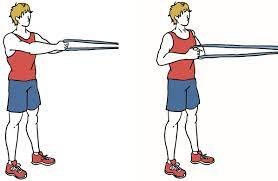
3)Rowing exercise
Tie a bit of elastic tubing around an immovable object and grasp the ends in each hand.
Remain your forearms upright and your elbows at shoulder level and bent to 90 degrees.
Pull revers on the band and squeeze your shoulder blades together.
Repeat 10 to 15 times
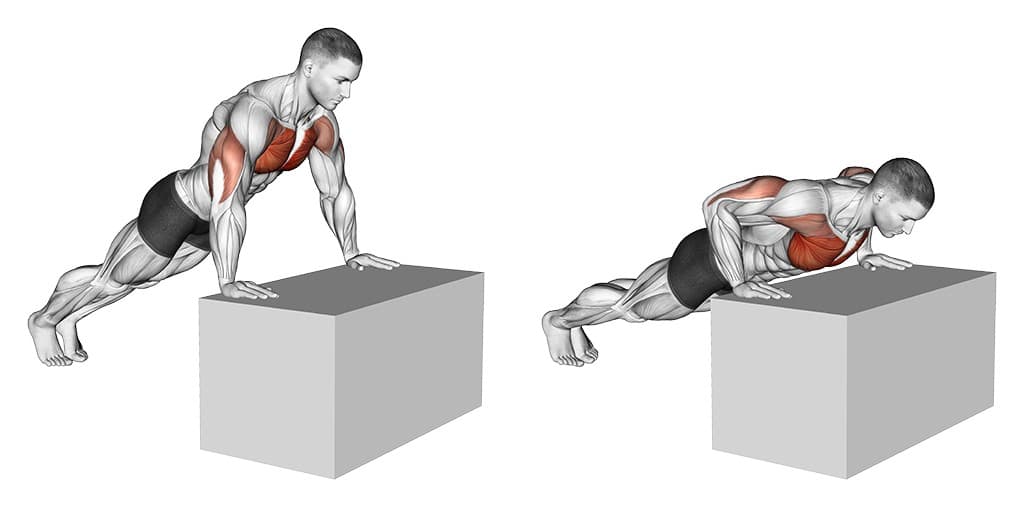
4)Incline push-up
Start together with your hands on the wall or a countertop height surface. Walk your feet back so that your body makes roughly a 45-degree angle with the floor.
Remain your body straight and your spine neutral, and lower your chest to the surface you’re tilting against.
Pause for a flash, then return to the beginning position.
Do 10-12 repetitions
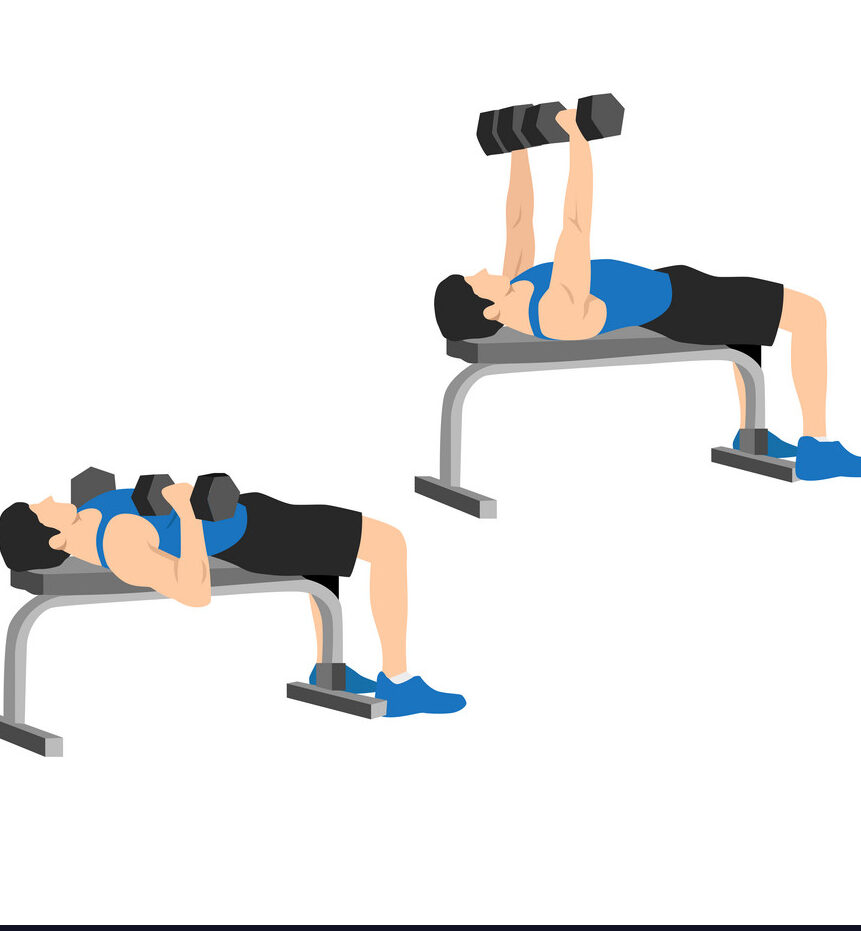
5)Flat bench press
Lie on your back on the bench together with your knees bent and feet flat on the floor. Grasp the dumbbell, together with your thumb wrapped around the dumbbell and palms facing toward your feet. Press your arms straight close to the ceiling to lift the load off the rack.
Move the load over chest level.
Your back on the bench together with your knees bent and feet flat on the floor. Grasp the dumbbell, together with your thumb wrapped around the dumbbell and palms facing toward your feet. Press your arms straight close to the ceiling to lift the
Bending your elbows down at a 45-degree angle, slowly lower the slide to your chest. Keep the dumbbell approximately in line together with your nipples.
Pause for a flash, then press the load back to the start position.
Complete 3 sets of 8–12 repetition

6)Push up
Get down in a prone position, placing your hands slightly wider than your shoulders.
Straighten your arms and legs.
Lower your body through your chest nearly touches the ground.
Pause, then push your body back to starting position.
Do 10 to 15 Repetition.
Preventive measures
- Do the proper warm-up before some exercises or sporting activity.
- Stretch after exercising or playing sports
- Avoid immediate intense strength training and build strength gradually
- Do Regular stretching and strengthening exercises for your sports, fitness, or work exertion, as a part of your overall physical activities
- An exercise program can help to minimize your danger of muscle strains.
- Try to be in a shape to play your sport; don’t play your sport to get in shape.
- If you have a physically demanding occupation, regular exercise can help to help injuries.
- Follow a healthy diet and an exercise program to maintain a healthy weight. The overweight can put added pressure on the muscles, making muscle strains again probable to do

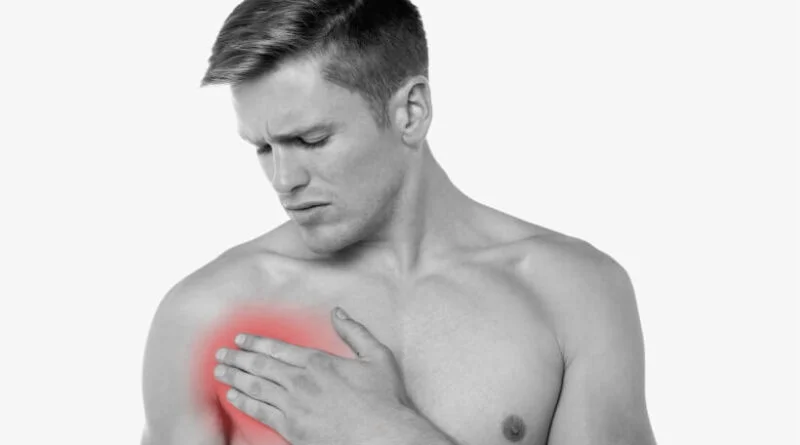

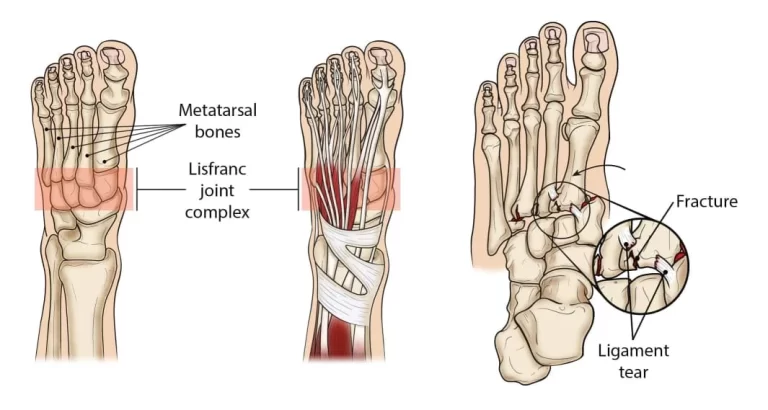

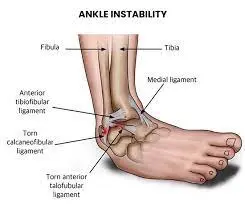
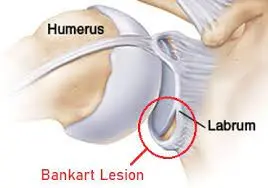
One Comment